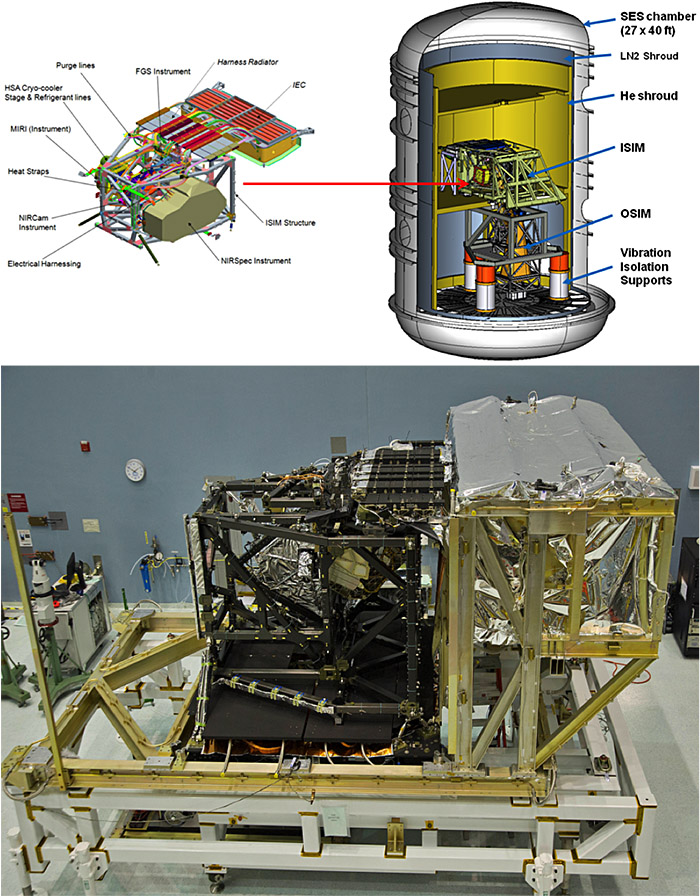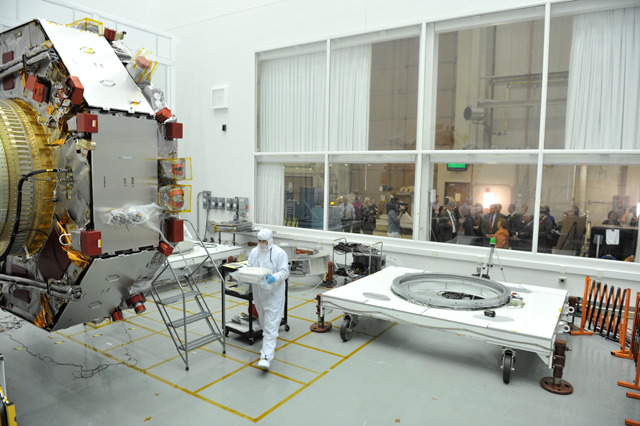The Space Environment Simulator
- By Maggie Masetti
- December 17, 2014
- Comments Off on The Space Environment Simulator
One of the coolest (literally!) facilities at NASA Goddard is the Space Environment Simulator (SES). It’s a massive thermal vacuum chamber, which is used to expose spacecraft and their components to environmental conditions like those they will experience in space.

Image Credit: Maggie Masetti
From this page on unique Goddard resources, we learn that the SES has “massive mechanical vacuum pumps, which are essentially large versions of the vacuum cleaners people use at home. To augment those, the chamber uses cryopumps to ensure that the hard vacuum of space is simulated in the test chamber. The cryopumps use liquid nitrogen to condense remaining gases out of the chamber once the mechanical pumps have done their work. The two types of pumps work together to eliminate all but the tiniest trace of air in the chamber, down to about a billionth of Earth’s normal atmospheric pressure. To simulate the hot and cold extremes possible in space, the thermal vacuum chamber can reach temperatures in a 600-degree range from 302 F all the way down to minus 310 F (hence the “thermal” vacuum chamber). The cylindrical chamber is 40 feet tall and 27 feet wide.”
It’s currently being used to test James Webb Space Telescope hardware using a helium shroud that allows temperatures ~ minus 387 F (40 K) and below!
The Helium shroud goes inside the SES and then JWST’s test equipment (a telescope simulator called the OSIM or Optical Telescope Element Simulator) and the flight instruments goes inside that. This summer they ran a several-months-long test on the instruments at the temperatures they’ll be operating at in space, which is ~40 K for all but JWST’s Mid-Infrared Instrument (MIRI) which has an additional cryo-cooler that gets it down to 6-7 K.
This is what the SES looks like with its top off – JWST’s flight instruments are being lowered inside for the summer:
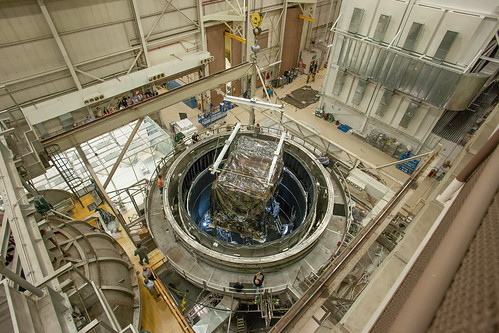
Credit: NASA/Desiree Stover
And here is several months later, with JWST’s flight instruments about to be lifted out via crane after this test was complete.

Credit: Mike McClare
The view from inside:

Credit: NASA/Chris Gunn
We did recently come across some old photos from the 60s showing that the SES has been at Goddard since nearly the beginning.
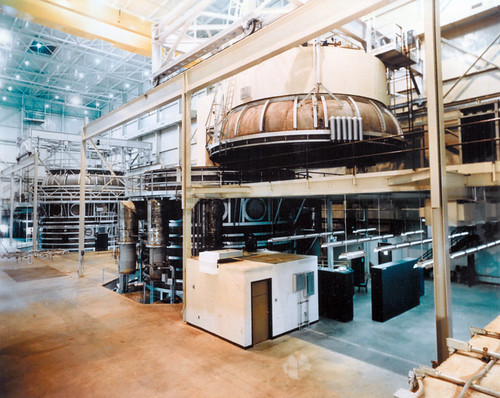
Credit: NASA
When this picture was taken in 1963, there were actually two large test chambers. The Dynamic Test Chamber (left) could create a “near-vacuum” with mechanical pumps. The more robust SES (right) augmented its mechanical pumps with diffusion and cryogenic setup, as well as a “solar simulator” to mimic spacecrafts’ exposure to the sun.

Credit: NASA
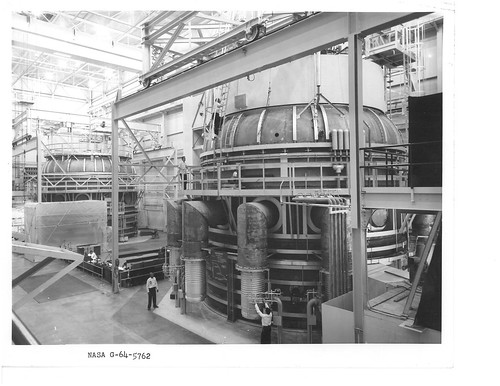
Credit: NASA
The building they are in took about a year to construct (fall 1962-’63), and the testing chambers shown here were both operational by early 1964.
The SES, with some modifications, is of course still with us today. The Dynamic Test Chamber existed as recently as 1973. That space is now taken up by the White House clean room.
The White House clean room construction started in 2006. Prior to the White House clean room being in that location, a full size mock up of the Space Shuttle Cargo Bay complete with Canada Arm was used by engineers and astronauts as they prepared and trained for Hubble servicing missions.
Here’s the White House cleanroom… from the inside, with one of the Magnetospheric Multiscale Mission (MMS) satellites.


